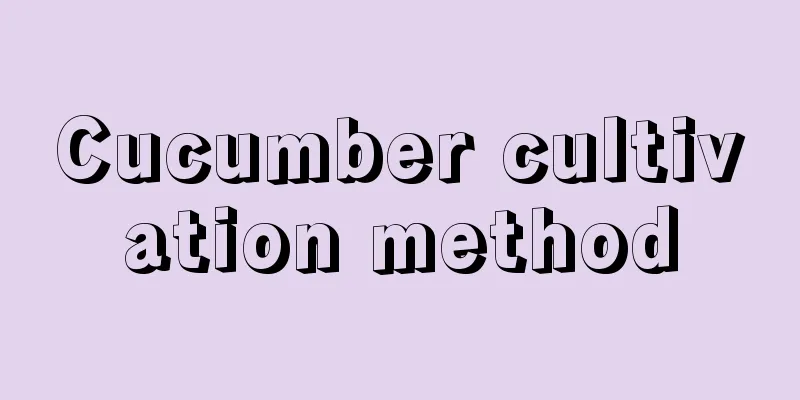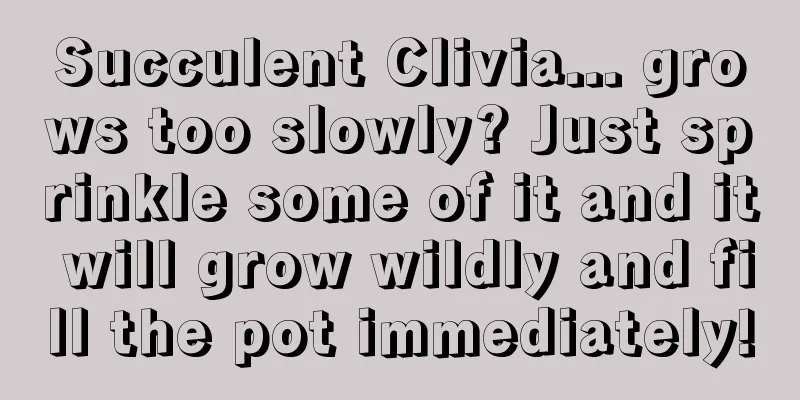Cucumber cultivation method

1. Maintenance methods1. Temperature: Cucumbers prefer a warm growing environment. The normal growth temperature is between 20 and 32 degrees. The low temperature cannot be lower than 15 degrees to avoid frostbite. Also pay attention to the high temperature, try not to exceed 35 degrees, otherwise the branches and leaves will be easily burned, and the cucumbers will also be dehydrated. Therefore, winter breeding needs to be carried out in a greenhouse. 2. Watering: Cucumbers need enough water during the growth period, which can promote the growth and development of seedlings. Watering is enough every three days. Do not water too much during the flowering period to prevent excessive watering which will cause the flowers of the plant to fall frequently. So try to wait until the ground is completely dry before watering. Watering once every seven days is enough. 3. Light: Cucumbers do not have high requirements for light, but they cannot always stay in a dark environment. They can fully accept full sunlight. There is no specific standard for how many hours of sunlight a day must be received. Strong sunlight can be avoided in the summer, and the newly grown cucumbers can be withered by the sun. 4. Fertilization: Before planting, sufficient base fertilizer needs to be applied, which can help the growth of seedlings. At the same time, topdressing can be carried out several times during the growth period, mainly chemical fertilizers. Of course, animal manure can also be used. This can increase the yield, increase the immunity of the plant, and reduce the occurrence of some diseases and pests. 2. Breeding techniques1. Reproduction: Sowing is the main method of reproduction. It can be planted on a large scale. Sowing can be done in spring when the temperature is just right. Water thoroughly after sowing. Then, in order to prevent moisture loss, you can cover it with a layer of plastic wrap and then press it gently to help the seeds grow. 2. Pruning: During the growth period of cucumbers, the branches and leaves may gradually age and can be cut off directly. Because the aged branches and leaves have no function, they can be cut off to prevent nutrient loss. 3. Problem diagnosis and treatment1. Disease: Vine blight will occur during the growth period, causing the branches and leaves of the plant to turn yellow and some unidentified gelatinous substances to appear. It can be controlled using pesticides. 2. Pests: Scale insects will appear on branches and leaves in summer, seriously affecting normal growth. You can use DDT solution to spray on the branches and leaves. Do not pour water on them after spraying. Continuous use of several times will have obvious effects. IV. Other issues1. Toxicity: Non-toxic, edible. 2. Can it be raised at home? It is not recommended to raise it at home, because its growth requires ventilation conditions, and it would be more suitable in a garden. |
<<: How to cultivate brocade flower
>>: How to grow wedding dress spider plant well
Recommend
Causes and treatments of yellowing leaves of arrowroot
1. Too much light 1. Reason: Most of the arrowroo...
Can Golden Edge Lucky Bamboo be grown in water?
1. Water culture method 1. First of all, it can b...
Don’t underestimate the gardenia after it fades. Take good care of it so that it will bloom again next time!
Trim It is very appropriate to prune gardenias af...
What is the best month to plant gourds? When is the best time to plant them (grows fast)
What month is suitable for planting gourds? It is...
How often should I change the water for my turtle?
Turtles are very popular pets and many people lik...
What are the vegetables with cold properties?
1. Eggplant It is a common vegetable on the table...
How often should I water the glass jade?
How often should I water the glass jade? Glass Ja...
How to grow white palm more vigorously
1. Light Too much or too little is not good. With...
How to plant pepper seeds?
Chili peppers are grown in many places in China, ...
Reasons for burnt edges of large-leafed begonia flowers (pictures) and how to fix them
1. Why 1. Improper application of water: The appl...
Is it easy to grow pansies? Potted pansies cultivation methods and precautions
Is it easy to grow pansies? Pansies are not easy ...
What should I do if Isuzu jade grows too long?
What does Isuzu Jade's leg growth look like? ...
Flowering period of Gardenia jasminoides
1. Flowering time The flowering period of large-l...
Bowl lotus picture
Apricot Yellow Lotus The flower buds are long pea...
What to do if rose leaves are curling
1. Infected with powdery mildew (1) Symptoms: If ...









